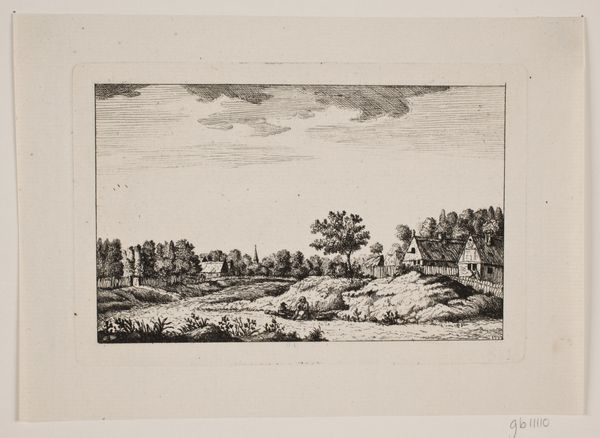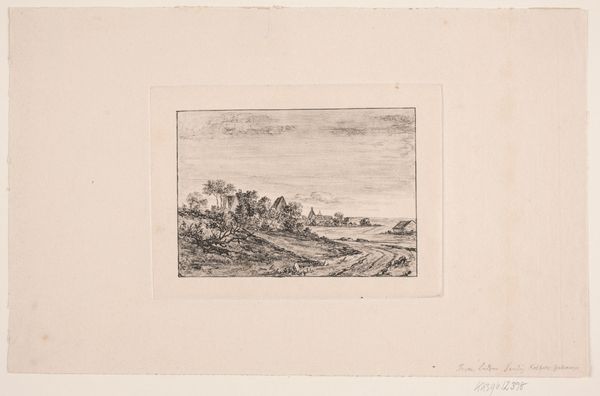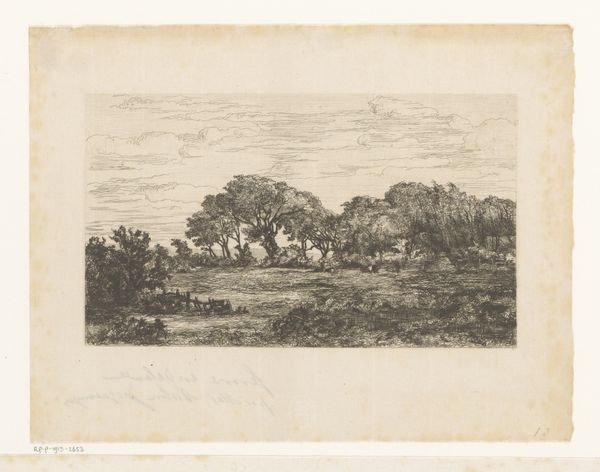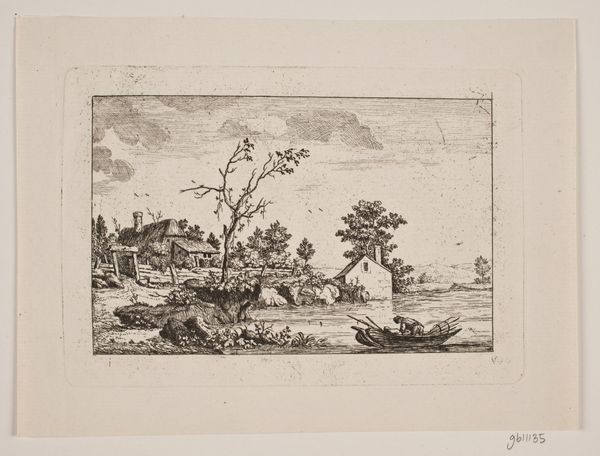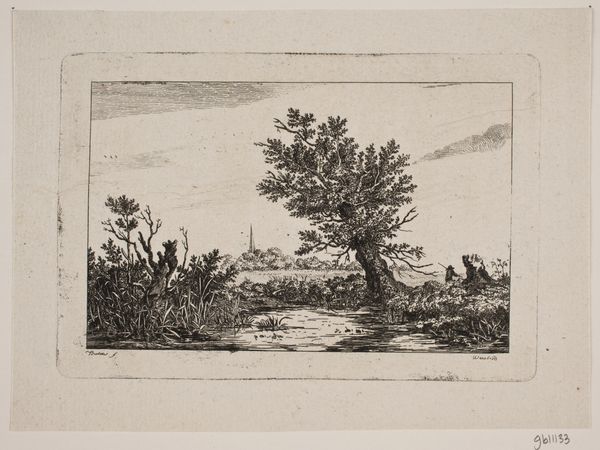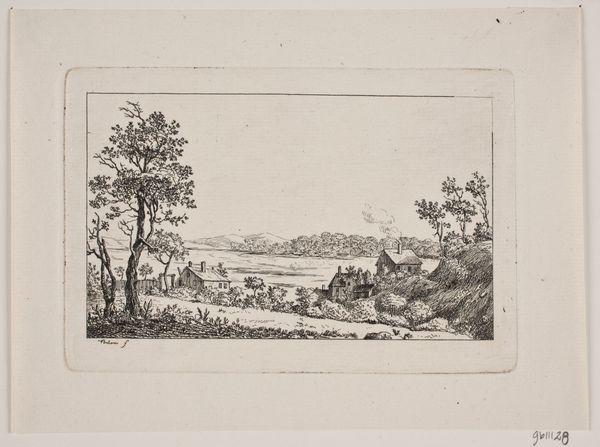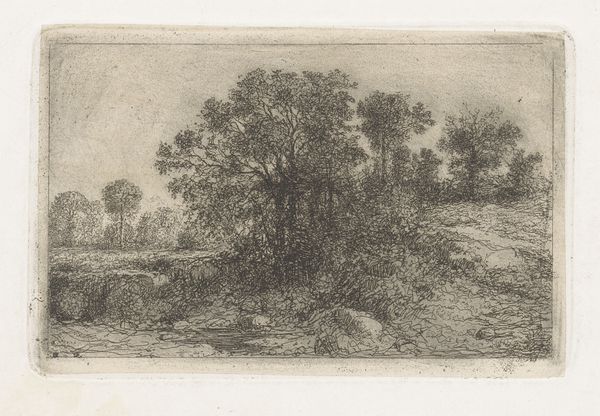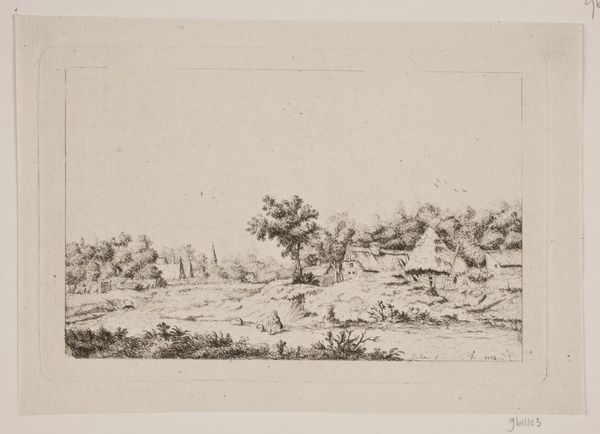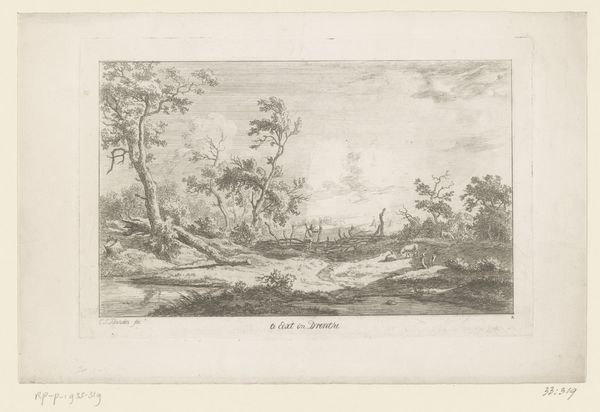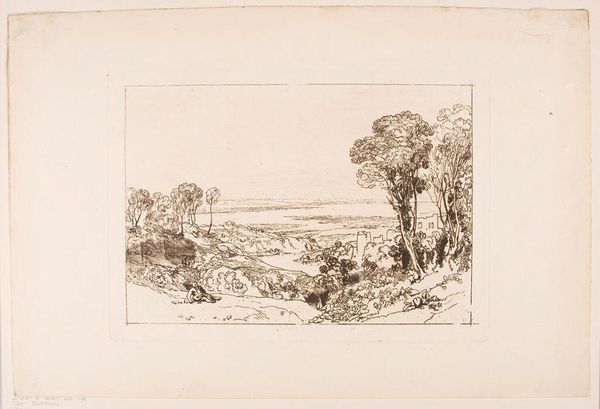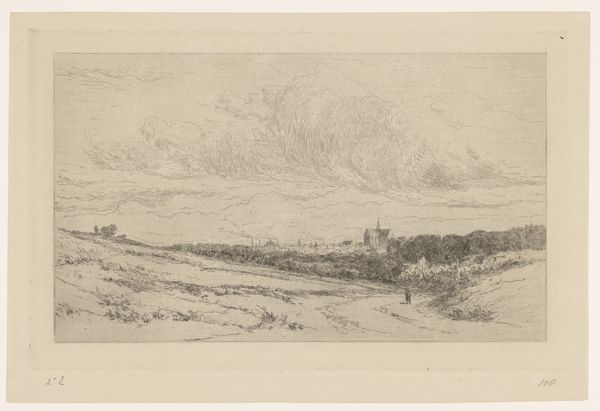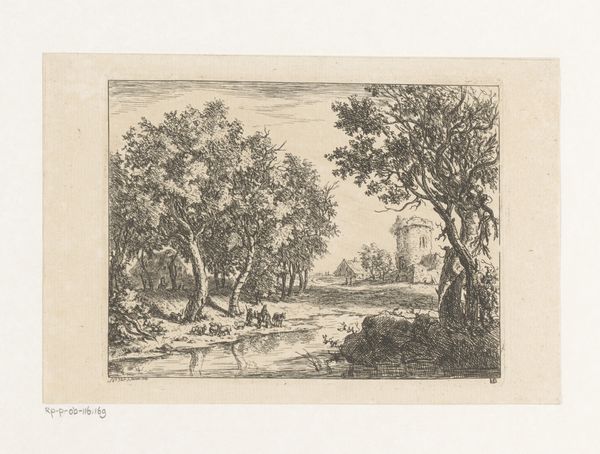
print, etching
# print
#
etching
#
landscape
#
etching
#
romanticism
Dimensions: 106 mm (height) x 156 mm (width) (plademaal)
Johan Bülow created this landscape with river using etching, a printmaking technique with a long and fascinating history. The image begins as a bare metal plate, likely copper or zinc. The artist coats the plate with a waxy, acid-resistant substance, then draws the design, exposing the metal. The plate is then submerged in acid, which bites into the exposed lines. The longer it sits, the deeper and darker those lines will print. Ink is then applied to the etched lines, the surface wiped clean, and the image transferred to paper under immense pressure. Notice the fineness of the lines, and the atmospheric effect created by subtle variations in tone. Think about the skill involved in controlling the acid, the pressure of the press, and the artist’s hand in drawing the initial image. It is a skillful combination of craft, chemistry, and artistic vision. Looking closely at the materiality and making of this print enriches our appreciation, and invites us to consider the relationship between art, labor, and technical knowledge.
Comments
No comments
Be the first to comment and join the conversation on the ultimate creative platform.
